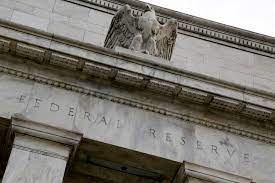The once-vaunted inflation hedge of the pandemic era is now officially unwinding, as evidenced by the significant outflows and capital losses experienced by Treasury Inflation-Protected Securities (TIPS) exchange-traded funds (ETFs). The combined assets of the top 10 US ETFs focusing on inflation-linked bonds have plummeted from a peak of over $99 billion in early 2022 to approximately $57 billion, roughly equivalent to late 2020 levels before the onset of significant consumer price surges, the first of their kind since the early 1980s.

This retreat underscores investors’ growing confidence in the Federal Reserve’s ability to rein in inflation. This confidence is expected to be confirmed with the anticipated report from the Labor Department, which economists predict will show that the annual increase in the consumer price index has fallen below 3% for the first time in about three years. By June 2022, it had been rising at nearly three times that rate.
The shift in sentiment is not unexpected, given that Federal Reserve officials share investors’ optimism and foresee the potential to begin easing interest rates this year to prevent economic stagnation. Additionally, ETFs catering to the prevailing investment trend often experience significant declines when investors shift focus to new opportunities.
Lindsay Rosner, head of multi-sector fixed income investing at Goldman Sachs Asset Management, remarked on the decline in TIPS flows, stating, “We experienced huge growth post-Covid. Now, growth feels soft-landing-ish, and the need for inflation protection has diminished. There is less demand for this style of portfolio allocation.”
However, part of the outflow may also stem from the fact that TIPS ETFs did not perform as well as expected as a safeguard against inflation. Despite providing additional payments to counteract rising consumer prices, TIPS were not immune to the impacts of the Federal Reserve’s monetary policy tightening. As the central bank rapidly raised interest rates, TIPS prices fell along with other fixed-income securities, essentially nullifying the extra payouts tied to inflation.
A Bloomberg index tracking TIPS suffered a record 12% loss in 2022. While it rebounded by 3.9% last year, the benchmark has lost 1.2% so far in 2024.
Michael Pond, head of global inflation-linked research at Barclays Capital, suggested that individual investors who flocked to TIPS ETFs may have been surprised by the losses incurred. Believing them to be a safe haven, many likely withdrew their investments when they realized losses instead. BlackRock Inc.’s $19 billion iShares TIPS ETF, the largest of its kind, saw a record $12 billion inflow in 2021, only to witness $14 billion in withdrawals over the following two years, with the fund experiencing approximately a 5% loss over the past three years.
“When TIPS had negative returns, many sold them after the fact because they hadn’t performed,” Pond explained.









